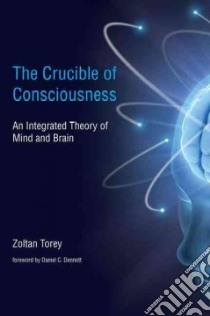- Libreria
- >
- Libri in lingua
- >
- Cognition & cognitive psychology
The Crucible of Consciousness - 9780262512848
Un libro in lingua di Zoltan Torey Dennett Daniel C. (FRW) edito da Mit Pr, 2009
- € 42.50
- Il prezzo è variabile in funzione del cambio della valuta d’origine
From the Foreword:
"Torey's way of putting things sheds new light on just what is going on in the 'computational' brain, since he has to find alternative metaphors to stand in for the now somewhat overworked comparison with computers. Just as poets often find that the constraints of rhyme and meter force them to discover strikingly apt expressions of their thoughts, it turns out that couching a computational theory of the mind in resolutely noncomputational terms pays dividends. There is much to repay readers in this book: to the uninitiated, it is a graceful and wise introduction to many of the central problems and arguments; to the veterans, it is a quite bountiful source of arrestingly different slants on familiar topics."
—Daniel C. Dennett, Director of the Center for Cognitive Studies, Tufts University and author of Sweet Dreams
In The Crucible of Consciousness, Zoltan Torey offers a theory of the mind and its central role in evolution. He traces the evolutionary breakthrough that rendered the brain accessible to itself and shows how the mind-boosted brain works. He identifies what it is that separates the human's self-reflective consciousness from mere animal awareness, and he maps its neural and linguistic underpinnings. And he argues, controversially, that the neural technicalities of reflective awareness can be neither algorithmic nor spiritual—neither a computer nor a ghost in the machine.
The human mind is unique; it is not only the epicenter of our knowledge but also the outer limit of our intellectual reach. Not to solve the riddle of the self-aware mind, writes Torey, goes against the evolutionary thrust that created it. Torey proposes a model that brings into a single focus all the elements that make up the puzzle: how the brain works, its functional components and their interactions; how language evolved and how syntax evolved out of the semantic substrate by way of neural transactions; and why the mind-endowed brain deceives itself with entelechy-type impressions.
Torey first traces the language-linked emergence of the mind, the subsystem of the brain that enables it to be aware of itself. He then explores this system: how consciousness works, why it is not transparent to introspection, and what sense it makes in the context of evolution.
The "consciousness revolution" and the integrative focus of neuroscience have made it possible to make concrete formerly mysterious ideas about the human mind. Torey's model of the mind is the logical outcome of this, highlighting a coherent and meaningful role for a reflectively aware humanity.
Informazioni bibliografiche
- Titolo del Libro in lingua: The Crucible of Consciousness
- Sottotitolo: An Integrated Theory of Mind and Brain
- Lingua: English
- Autori : Zoltan Torey Dennett Daniel C. (FRW)
- Editore: Mit Pr
- Collana: Mit Pr (Paperback)
- Data di Pubblicazione: 30 Giugno '09
- Genere: PHILOSOPHY
- Argomento: Consciousness
- Pagine: 247
- Dimensioni mm: 228 x 158 x 19
- ISBN-10: 026251284X
- EAN-13: 9780262512848


